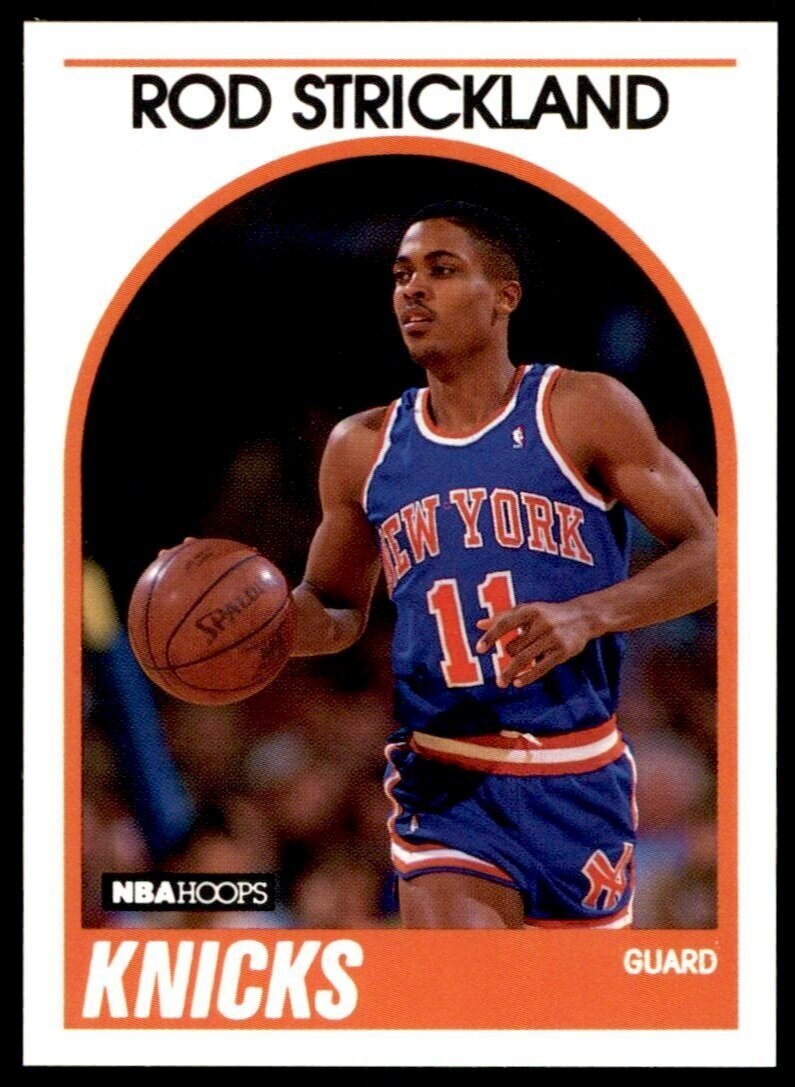The Strickland: An Original
An ode to one of the best NYC point guards ever, who barely got a shot on his home team but left an enduring legacy
This is a collaboration between Prez and MMiranda, fueled by a shared love of Rod Strickland, NYC, mofongo, rellenos, pasteles y piraguas.
Rod Strickland is many things to many people: Beloved. Underrated. A born and bred New Yorker. Quiet with a loud game. A “classic NYC point guard” — not only homegrown, but home-picked in the 1988 draft. A Knick through and through, despite only a short stint orange and blue’d up. He’s the one who got away, unsatisfied with being Mark Jackson’s understudy at MSG. A Gaucho - as in one of the more famous alums of the iconic Bronx-based Gauchos AAU team.
(Do your googles, new New Yorkers.)
He was before his time — go check a random, grainy, NBA-on-NBC highlight package on YouTube and you are guaranteed to see a few eurosteps. There is a direct, traceable line from him to his godson, Kyrie Irving; whereas both pushed the envelope for ball-handling in a crowd and finishing among the trees, only Strick did it before hand-check rules made paint forays a contact-free proposition. That kind of guard is the lifeblood of today’s PG-centric league.
Strickland was also completely and totally of his time, both on and off the court.
Back in the ’90s, in both music and basketball, regional flavors colored the artists of the time period much more strongly than they do in today’s interconnected world, and Strickland’s game was proof of that. That sort of game, at that time, could only be birthed in one place. Knicks fans, be they native New Yorkers, new ones, or displaced die-hards, knew that and appreciated it — even after he left.
Despite his talents, he was never an All-Star. If respect is measured by your weight with peers, though, his legacy is as cemented as a New York sidewalk. NBA fans and NBA stars of the ’90s alike regularly reflect on how his humble off-court attitude belied his flashy passes, deadly ball handling and incredible finishes. It’s no accident he remains a big part of the league, connecting with everyone from kids born in the new millennium to grizzled vet coaches around the country.
That said… Strick, to a whole generation of Knicks fans, probably doesn’t mean much. Maybe a name from some throwback rap songs, and that’s about it. He deserves more. We wanted to pay homage. Why? Maybe because there’s something inherently honorable about a homegrown kid who doesn’t let outside accolades define him, and instead stays true to his home and his character, even when he leaves home behind.
Or maybe because for Strickland, like so many of us, home became somewhere he wasn’t sure he could come back to. The Knicks drafted him the same day they traded for Charles Oakley; while the latter move was enormously popular with the fanbase, drafting Strickland right after Jackson won Rookie of the Year was not. Knicks fans booed his selection on draft night. He himself seemed unsure what the team was thinking.
''The Knicks hadn't contacted me at all, so I was surprised when they picked me,'' he said after being drafted. ''I've been a Knick fan since I was a kid, so I'm happy to be here with an up-and-coming team. I'm trying to feel happy about being picked by New York, but I don't know for sure that something else isn't brewing.” Coach Rick Pitino’s attempt to explain the team’s logic didn’t help much.
''We're going to keep Rod,'' Pitino said. ''We drafted him to save Mark Jackson's career. With Rod as a backup point guard, Mark won't be worn out before he's 30 years old. Mark can sit down for 12 to 14 minutes a game now and feel comfortable about it. Also, having Rod around will keep Mark on his toes, and when we get into a situation where we need ball-handling, Mark and Rod can be on the court together.'' A diplomatic answer that never held up in reality.
Nine months later, Jackson was debating whether to have surgery to repair torn knee cartilage while Strickland, in his first-ever NBA start, went off for 20 points, 14 assists and five steals in a win over the Chicago Bulls. He could get to the rim with ease, and no Knick was better at finishing impossible looks at the rim. Less than a year later, Strickland was sent to San Antonio for future Hall-of-Famer, but past-his-prime Maurice Cheeks. Cheeks helped the Knicks win a playoff series against Boston; two years later, he retired. Strickland went on to have one of the greater careers of any NYC point guard.
Both sides lost something essential after the trade. The Knicks would soon hire Pat Riley, trade Jackson, and spend a decade coming close, but not quite close enough to a championship. Other than Derek Harper and Stephon Marbury, the 30 years since have seen New York fail miserably at the point guard spot. Strickland, meanwhile, enjoyed a long and productive 17-year career. But in his 15 full seasons after the trade, he never got past the first round of the playoffs. Both sides did as much as they could without one another. Who knows what they may have accomplished together?
The Strickland will, we hope, grow to mean a great many things to a great many people. A lot of us, like a lot of you, have a chip on our shoulder. We hope to be the ones who got away from wherever we left to get here. To never be satisfied with what’s given. To push for more. To be both before our time and of it, too. Rod Strickland was artistic, magical, sustainable and successful. His game and his rep were unique, and earned, and flavorful. He was an original. We honor him as such. We hope to be the same to you.


